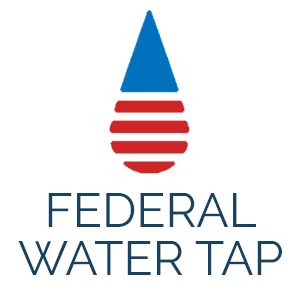The Stream, February 18, 2025: Deadly Flooding Comes to Kentucky Again; Sydney’s Big Wastewater Treatment Investment

Harlan, a riverside town in eastern Kentucky, has witnessed many floods. Photo © Brett Walton/Circle of Blue
YOUR GLOBAL RUNDOWN
- Devastating flooding in Kentucky, Tennessee, Indiana, and West Virginia has killed 13 people as heavy rainfall continues to force rescues, evacuations, and road closures.
- Sydney, Australia, will invest $32 billion over the next 15 years to improve its wastewater treatment and sewage system.
- In Victoria Falls, Zimbabwe, a rise in ecotourism is also increasing local plastic pollution.
- The health of rivers and streams in England, following the country’s departure from the European Union, continues to worsen as communities demand action.
— Christian Thorsberg, Interim Stream Editor
Fresh: From the Great Lakes Region
DeForest, Wisconsin: The village, home to about 11,000 people, will remove fluoride from its drinking water on March 7 despite opposition from the majority of its residents, Wisconsin Public Radio reports. Health experts also support the continued fluoridation of drinking water.
Bridge Michigan, Circle of Blue, Great Lakes Now at Detroit Public Television, Michigan Public and The Narwhal work together to report on the most pressing threats to the Great Lakes region’s water. This independent journalism is supported by the Charles Stewart Mott Foundation. Find all the work here.
- Tackling environmental racism in Chemical Valley — The Narwhal
- Snow is making a big comeback in Michigan this year, with more to come — Bridge Michigan
- New York’s proposed PFAS legislation and other Great Lakes states latest efforts to combat ‘forever chemicals’ — Great Lakes Now
- Gone a century, Arctic grayling return soon to Michigan. Can they survive? — Michigan Public
The Lead
More than a month’s worth of rain fell on much of Kentucky over the weekend, killing at least 11 people in the state and forcing the closure of more than 340 roads, a record, CNN reports. More than 1,000 people were rescued during door-to-door evacuations led by the Kentucky National Guard and state police, though efforts aren’t finished yet — hundreds more people remain in harm’s way as more rivers and streams have yet to crest. Two more people died — one in West Virginia, one in Georgia — as a result of the storms to the east and south. And in Rives, Tennessee, a levee on the Obion River broke, prompting the call for a local state of emergency and community evacuations. Similarly, roads and homes are underwater in parts of Indiana.
Preparing for floods like these, Kentuckians have been moving from low-elevation homes to mountaintops, where communities are being built atop former strip mines.
Recent WaterNews from Circle of Blue
- Opinion: The President’s Plastic Trigger — President Trump delights in alarming opponents and aiding friends in polluting industries
- Have You Seen This Fish Thief? — A new film spotlights the sea lamprey, also known as “Dracula of the Lakes.”
This Week’s Top Water Stories, Told In Numbers
$32 billion
The amount of money the city of Sydney, Australia, plans to invest over the next 15 years in its sewage and wastewater treatment system, which experts have called “archaic” and “inefficient,” the Guardian reports. Currently, 80 percent of the city’s sewage is discharged into the ocean after only an initial treatment. Officials say this pathway wastes water that could potentially be recycled. It could also reduce pollutants. According to a 2020 study the current system releases between 5.4 billion and 120 billion microplastic particles to sea each day.
3.6 million
The number of hours, in 2023, that raw sewage spilled into England’s rivers, streams, and seas, France24 reports. In the aftermath of Brexit, England’s private water companies have no longer been held to European Union standards for wastewater treatment. They have often exploited a lack of strict oversight by choosing to dump wastewater, rather than treat it — the latter being a more expensive process. Hundreds of discharge points around the country, emptying into fresh waterways, have been found with elevated levels of bacteria, E. coli, and other pollutants. In southeast England, a proliferation of tomato plants is evidence of this lack of care: tomato seeds, found in human feces, are being dispersed in untreated water into fields.
On the Radar
More than 400,000 tourists visit Victoria Falls every year, located on the Zambezi River on the border between Zambia and Zimbabwe. But with this visitation, increasingly, comes waste: without a functioning waste collection system, garbage often ends up in streams, nature, the sides of highways, and local villages. Volunteers have set up cages in towns for residents to place their trash where it won’t affect local wildlife, and close to 40,000 tons of plastic pollution are collected each year. Community leaders and experts are demanding that the town of Victoria Falls, home to 35,000 people, invest in a proper waste disposal system. Local companies are also encouraging people to stop using plastic bottles, and switch to metal canisters instead.
49th State Focus: Creation of Alaska Department of Agriculture On Horizon
Food Focus: Alaska, one of two states without a cabinet-level agriculture department, may have one as soon as July 1, following an executive order issued by Gov. Mike Dunleavy, the Alaska Beacon reports. Rhode Island, the other state without such a department, is the only state with fewer farms than Alaska, where the oil and gas industries dominate. But concerns of food shortages, highlighted during the Covid-19 pandemic, have focused the minds of lawmakers on agriculture.. The creation of such a department would bring an estimated 13 new jobs and cost roughly $10 million.
Christian Thorsberg is an environmental writer from Chicago. He is passionate about climate and cultural phenomena that often appear slow or invisible, and he examines these themes in his journalism, poetry, and fiction.








Leave a Reply
Want to join the discussion?Feel free to contribute!